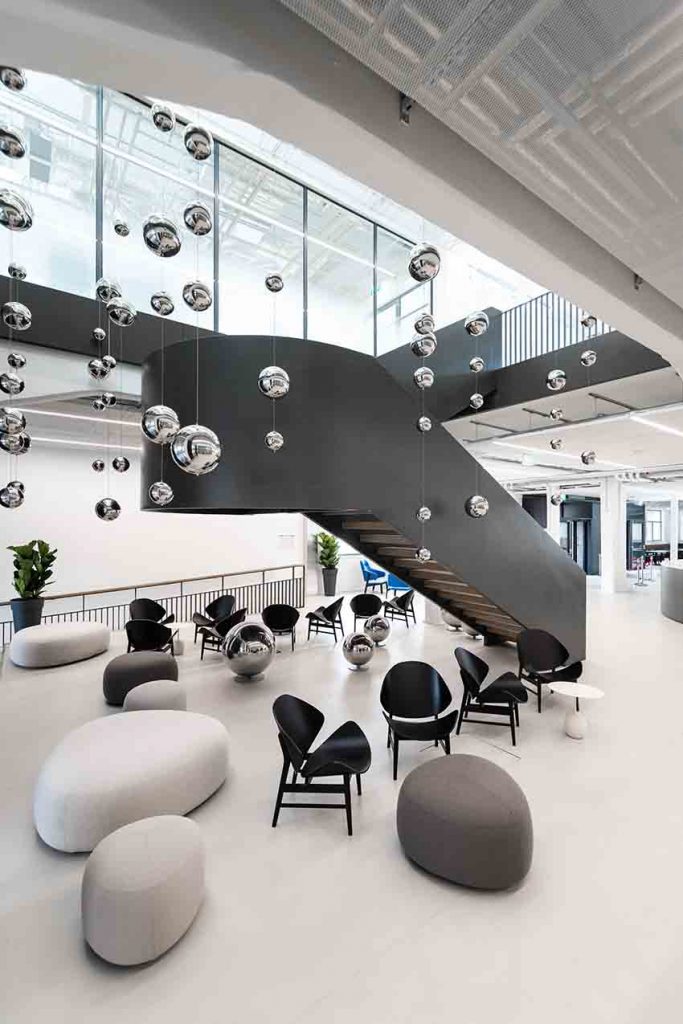Nesite is an Italian manufacturer of raised floors with a strong engineering component and a natural attitude to aesthetics and customization. The solutions in Nesite’s catalog are many, experimenting with new materials and technologies applied to the floor, in order to meet the construction needs of projects of all kinds, from small offices to infrastructures, museums, tall buildings and large public buildings. The strong inclination to customization distinguishes Nesite from other players in the sector, making it a flexible company that is very aware of the evolution of the market.
Interview with Rosanna Liseno, Director of Nesite.
Easy Engineering: What are the main areas of activity of the company?
Rosanna Liseno: Nesite’s main market is in the design of buildings, architecture and interior design. In fact, the raised floor was initially created for technical rooms, but thanks to its ability to conceal all the systems without masonry work and its easy adaptation to maintenance and reconfiguration of spaces, it quickly spread to workplaces and public spaces, as well as in historical contexts where it is essential to minimize the impact of construction work and interventions. In recent years, thanks to the introduction of new finishes and new technologies (e.g. underfloor heating), we are also experiencing an increase in sales to the residential sector, mainly through the involvement of interior designers and architects.
E.E: What’s the news about new products?
R.L: We invest a large part of our time and resources in research and development. For us, there is no limit to innovation, and we have always taken every opportunity from projects to rethink our offer and experiment with new solutions. This has led, for example, to the Juno raised floor, with backlit acrylic stone cladding, or Cork, our collection with this material, which does not require trees to be felled for its extraction, but at the same time guarantees excellent performance and great resistance, even in high traffic environments.

E.E: What are the ranges of products?
R.L: On a stainless steel structure, which varies according to the required load capacity, we install panels with three different cores: chipboard, sintered material (for maximum resistance, even outdoors) and calcium sulphate, which is the most versatile and most popular solution on an international scale. We then have the possibility of resizing, edging and directly applying the surface finish to the panel, and here the possibilities of customization increase exponentially: from ceramics to natural stone, parquet, glass, up to solutions with dry laying. Our 4.0 system, for example, offers panels coated on the top with a pigmented heterogeneous resin, which after drying forms a scratchproof and shockproof film, customizable also by degree of opacity and with graphic elements and prints. We also have products in the catalog with interlocking male-female panels, with backlighting, with heating and cooling system … and of course we remain available to our customers to design custom solutions, which we can then test internally to evaluate the results, quality and durability.
E.E: At what stage is the market where you are currently active?
R.L: The raised floor, especially outside Italy, is still too often seen as a technical supplement for operational environments. From this point of view, the marginality is in our opinion low, compared to the work, research, technology and quality proposed. A lot can still be done in this sector, and for this reason, together with other companies, we are trying to raise the image of the raised floor and give it the right value.

E.E: What can you tell us about market trends?
R.L: Sustainability and biophilicity are extremely topical issues, undoubtedly the direction to take in the future. The wood materials we use have always come from FSC-certified forests and together with the Green Building Council, of which we are a member, we promote conscious and sustainable design. Precisely because we believe in these values, we have recently created Floora, a system for green flooring with which we want to encourage the entry of nature into the workplace and beyond. With Floora, through hydroponics tanks that can be easily installed in place of the classic 60×60 cm panels, even in pre-existing projects, it is possible to create reconfigurable areas of greenery. A project in which we believe a lot and that we are promoting in these months on an international scale.
E.E: What estimations do you have for 2022?
R.L: We have recently opened an exhibition space in Milan, the Italian capital of the design world, and it is not to be excluded that in the future we may open new flagships in Europe. 2020 and 2021 have been extremely positive, despite some slowdowns due to the absence of some raw materials. We are currently experimenting with new sustainable materials, with which we can promote a collection dedicated to particularly green projects. We are also continuing the long process of certifications – always evolving – thanks to which we are able to deliver our products all over the world.

